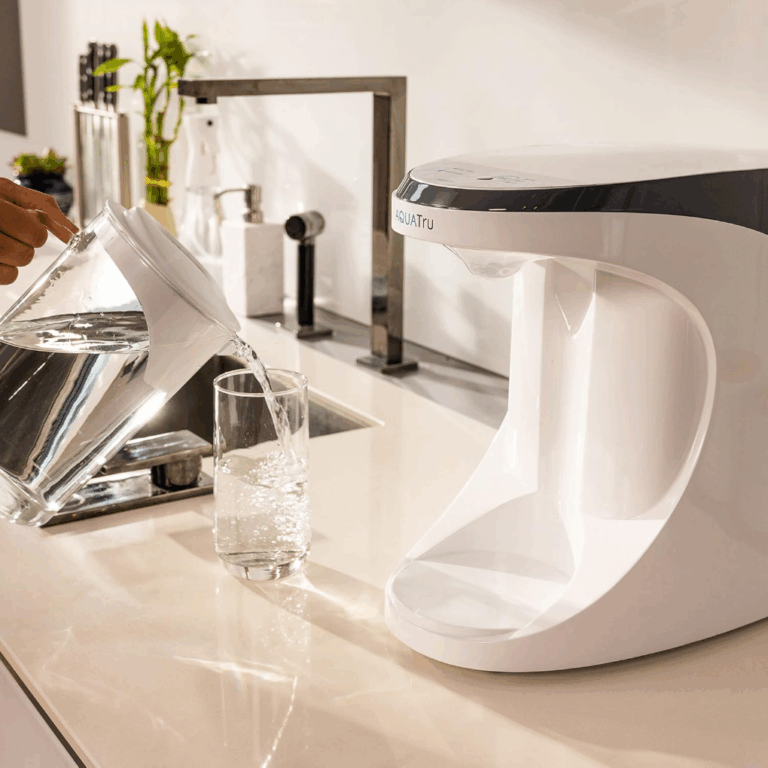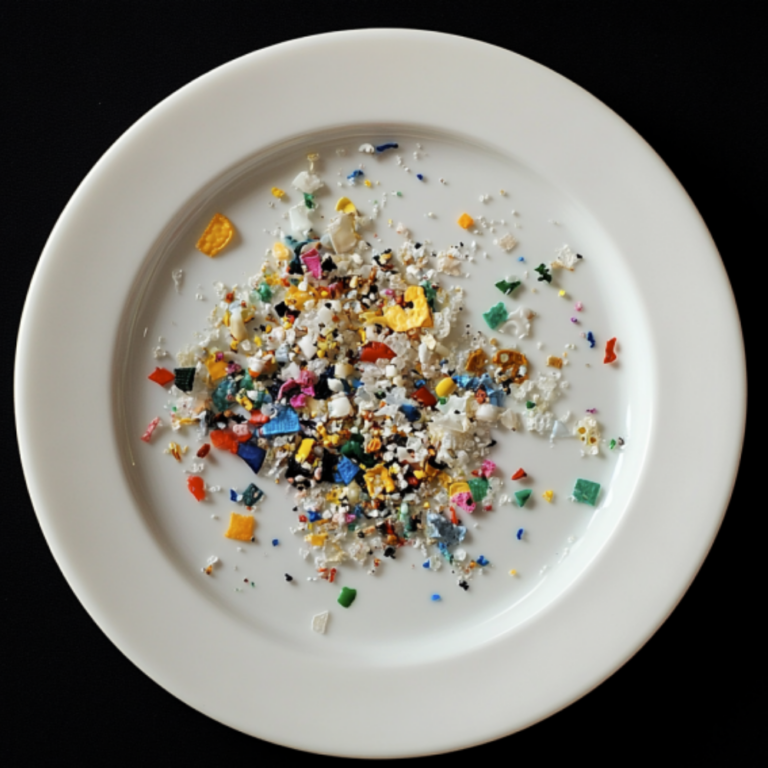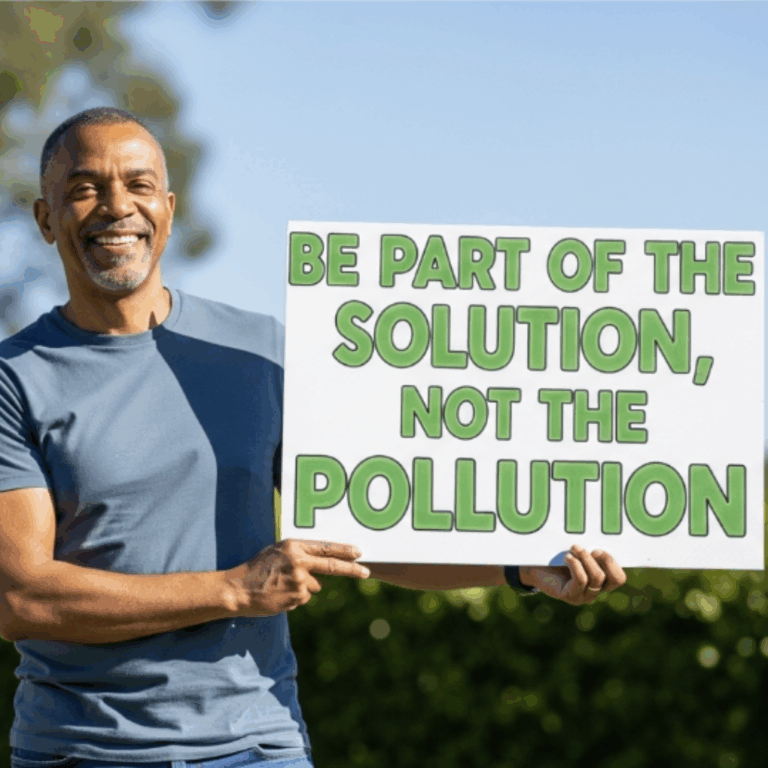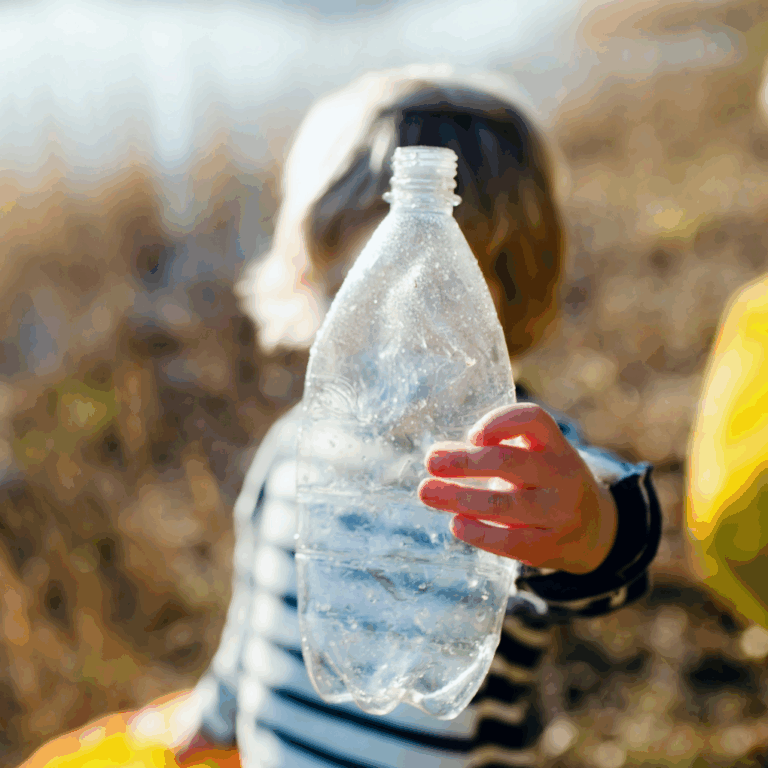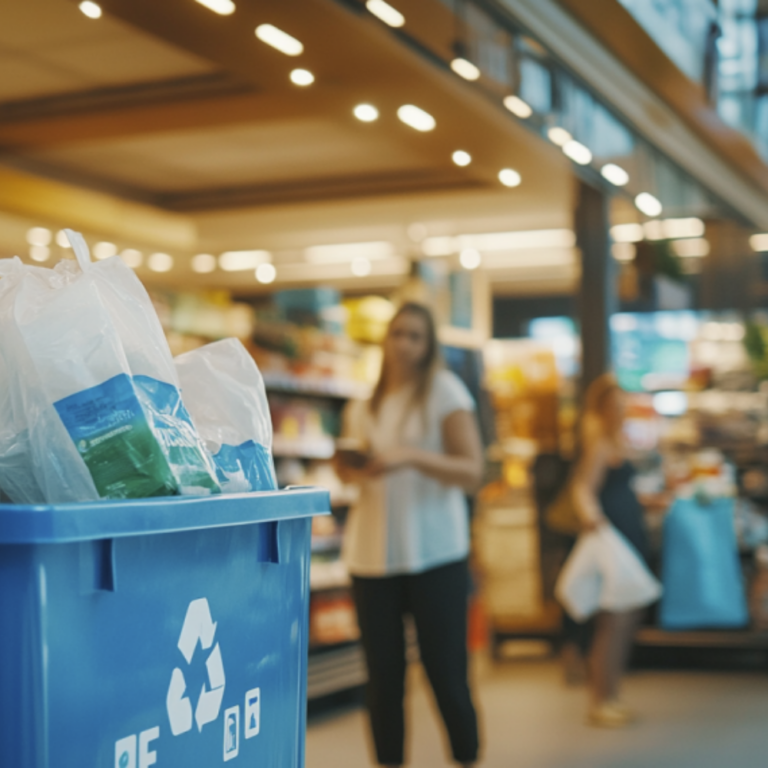
Key Takeaways
- Silicone doesn’t shed traditional microplastics, making it more stable than plastic.
- High-quality, food-grade silicone is safe for cooking, baby products, and long-term use.
- While durable and reusable, silicone isn’t biodegradable and is rarely recyclable.
Silicone has become the go-to material for almost everything these days—from spatulas and baking mats to water bottles and collapsible lunch boxes. It’s flexible, durable, heat-resistant, and often marketed as the “eco-friendly” alternative to plastic. But here’s the question many people have: Does silicone contain microplastics?
With microplastics now showing up in our bodies, water, soil, and food, it’s worth looking closely at the materials we bring into our homes. Just because something isn’t plastic doesn’t mean it’s automatically safe, sustainable, or microplastic-free. So, let’s break down what silicone really is, how it holds up over time, and whether it adds to the microplastic problem we’re all trying to avoid.
Does Silicone Release Microplastics?
Silicone doesn’t shed traditional microplastics the way petroleum-based plastics like polyethylene or polypropylene do. Plastics like polyethylene or polypropylene break down into tiny plastic fragments under heat, UV light, and friction. Silicone, on the other hand, has a different chemical structure, so it doesn’t create the same type of microplastic particles.
That said, silicone isn’t completely particle-free. Low-quality products, especially those with plastic fillers, can degrade over time and release microscopic silicone-based bits. Scientists are still studying how these particles behave in the environment and whether they pose similar risks to microplastics.
So while your silicone lid isn’t leaching polyethylene fibers into your tea, quality matters; chalky, flimsy, or strong-smelling silicone is often a red flag for fillers that break down faster and shed more. High-quality food-grade or medical-grade silicone is far more stable and safer for everyday use.
Silicone is more durable and stable than plastic, but it’s not entirely immune to wear. If your goal is to reduce micro-contaminants, invest in 100% silicone products and use them for the long haul.
To see why silicone behaves differently, let’s take a closer look at what it’s made of and how it compares to plastic.
What Is Silicone, and How Is It Different from Plastic?
Silicone and plastic often serve similar functions in our homes, but their chemistry and behavior are very different. These differences matter for health, safety, and environmental impact.
What Makes Them Different
Plastics such as polyethylene and PVC are petroleum-based polymers, often blended with additives like phthalates and flame retardants. Many of these chemicals have been linked to hormone disruption and other health concerns.
Silicone, on the other hand, is made from silicon (derived from sand) combined with oxygen, carbon, and hydrogen. Its siloxane bonds are much more stable, giving silicone superior heat resistance and chemical durability compared to most plastics.
Performance in Daily Use
This structure makes silicone non-porous, stain-resistant, and flexible across a wide range of temperatures from the freezer to boiling water. That’s why it’s common in cookware, baby products, and even medical devices.
Plastics, by contrast, degrade more quickly under heat or UV light. As they break down, they can release chemicals and shed persistent microplastics.
Health and Safety of Silicone in Everyday Use
Chemical Stability & Heat Resistance
Silicone’s most significant advantage is its stability under extreme temperatures. Quality silicone can go from the freezer to the oven without melting, warping, or releasing harmful substances. Unlike many plastics, it stays intact and doesn’t leach chemicals when heated, making it a safer choice for cooking and food storage.
Food-Grade vs. Filler Silicone
Not all silicone products are created equal. Food-grade and medical-grade silicone are designed to be biocompatible, non-toxic, and free of common plastic additives like BPA or phthalates. These are the safest options for items that come into contact with food, skin, or medical settings. By contrast, some cheaper products contain plastic fillers or undisclosed additives that reduce durability and safety.
Risks of Low-Quality Products
Low-grade silicone often gives itself away: it may feel chalky or flimsy, discolor quickly, or carry a strong chemical odor. These are warning signs that the product may not be pure silicone. Poor-quality materials can degrade faster, crack or flake, and in some cases, release unwanted compounds into food or drinks. Sticking with 100% silicone from reputable brands helps you avoid these risks.
Environmental Impact of Silicone

Silicone is often marketed as a greener alternative to plastic, but the truth is more nuanced. On one hand, it’s far more durable than most plastics, doesn’t easily break down into microplastics, and can replace dozens of disposable items over its lifespan. On the other hand, it requires a high amount of energy to produce, isn’t biodegradable, and is rarely accepted in recycling programs..
⚡ Production and Energy Use
Silicone starts with silica (from sand), but turning it into the flexible material we use in kitchens and homes is an energy-intensive process that requires high heat and chemical additives. Unlike plastic, it’s not directly made from fossil fuels, but manufacturing still carries a significant carbon footprint.
♻️ Durability and Reuse
This is where silicone shines. A single baking mat or food bag can last for years, replacing dozens of disposable items. The longer you use silicone, the more it offsets the energy used in production. And because it holds up in the oven, freezer, and dishwasher without warping, you don’t need to replace it as often as plastic.
🚮 End-of-Life and Recycling
Here’s the challenge: silicone is not biodegradable, and most curbside programs won’t recycle it. When products wear out, they usually end up in landfills. Some brands partner with programs like TerraCycle to downcycle old silicone into industrial products, but access is limited.
Silicone isn’t impact-free, but when used for durable, long-term products, it’s a better choice than short-lived plastics. Choosing high-quality silicone and keeping it in use as long as possible makes the most significant environmental difference.
Related Article: How to Recycle: A Simple Guide to Recycling Correctly Not all materials are easy to recycle—but knowing the right steps can keep more waste out of landfills. Read more →✨ Tips
How to Reduce Silicone’s Environmental Footprint
- Use silicone only for items you plan to keep for a long time.
- Avoid single-use silicone swaps that don’t offer real durability.
- Look for brands that share info about sustainable manufacturing or offer recycling programs.
- When silicone wears out, consider upcycling it (for example, using old baking mats as liners, drawer grippers, or pet bowl pads) before discarding it.
Silicone isn’t biodegradable or widely recyclable, but when used wisely, it can help reduce environmental pollution and waste caused by lower-quality materials.
Durability and Longevity of Silicone Products
One of silicone’s biggest perks is that it’s built to last. Unlike plastic, which warps, cracks, or sheds over time, silicone holds up under pressure—literally. It can handle boiling water, baking temperatures, freezing conditions, and daily use without falling apart.
That makes it a smart choice for items you’ll use again and again, like:
- Baking mats that replace rolls of parchment paper
- Baby products that need years of safe use
- Spatulas and lids that don’t melt in a hot pan
- Food storage bags that work in the freezer, dishwasher, and microwave
💡 When Silicone Is Worth It
Silicone makes the most sense when replacing disposable or low-quality items. If you reach for something daily, a durable silicone version can keep dozens of cheap plastic alternatives out of the trash.
Think of silicone as a “buy-it-once” material. It’s not meant to be trendy or seasonal. A high-quality product made from 100% food-grade or medical-grade silicone can last 5 to 10 years or more, depending on how you care for it.
🔄 When to Replace It
Even durable materials wear out eventually. Here’s how to know when it’s time to retire your silicone:
- Feels sticky or greasy even after washing
- Cracks, rips, or flakes start showing
- Strong odor that won’t go away
- Color changes dramatically (beyond normal staining)
🛠️ Tips to Extend Its Life
- Avoid cutting with sharp utensils
- Skip abrasive scrubbers
- Wash with warm, soapy water or on the dishwasher’s top rack
- Store flat or loosely rolled — don’t overstretch
Sustainable Alternatives and Usage Practices
Silicone can be a solid step away from plastic—but it’s not always the most sustainable option. Knowing when to use it, how to care for it, and what to choose instead can help you reduce waste and avoid unnecessary environmental impact.
When Silicone Makes Sense
Silicone works best for long-lasting, high-heat, or hard-to-replace items. Think:
- Medical-grade silicone menstrual cups that last for years
- Food-grade silicone baking mats that replace rolls of parchment paper
- Reusable food containers and bags that can handle freezing, heating, and repeated
In these cases, silicone outperforms plastic in durability and safety. Make sure you choose high-quality materials—100% food-grade or medical-grade silicone, not filler-laced versions that wear out quickly.
Better Alternatives to Consider
When flexibility or heat resistance isn’t essential, you should skip silicone altogether in favor of biodegradable materials or more recyclable options. Some outstanding swaps include:
- Glass – Ideal for pantry storage, meal prep, and oven-safe containers
- Stainless steel – Durable and endlessly recyclable; great for lunchboxes, straws, and bottles
- Natural rubber – Works well for baby products and some household items.
- Wooden or bamboo spatulas – Compostable and perfect for stovetop use if you’re not working with nonstick cookware
- Beeswax wraps or cotton bowl covers – A plastic- and silicone-free way to keep food fresh.
These materials tend to have a lower end-of-life impact and are easier to dispose of responsibly.
Related Article: Best Glass Food Storage Containers 👉 Looking to store your meals without the risk of microplastics? Discover the top glass containers that are safe, durable, and eco-friendly. Read more →Best Practices for Using Silicone Sustainably
If silicone is the right tool for the job, here’s how to make sure you’re using it as sustainably as possible:
- Buy once, use for years. Stick to well-made silicone products you’ll reach for regularly.
- Care for it properly. Hand wash or place on the top rack of the dishwasher. Avoid sharp tools. Store it flat or loosely rolled.
- Repurpose worn-out pieces. Old silicone mats can be used as jar openers, grip pads, drawer liners, or pet bowl placements.
- Donate gently used items. If it’s still in good condition, consider donating gently used silicone kitchenware or containers to shelters, schools, or community kitchens.
Pure silicone has very low potential for chemical leaching, even at high heat. However, cheaper silicone with fillers or additives may degrade over time and release unwanted compounds. Signs of low quality include strong odors, sticky surfaces, or quick discoloration.
Most curbside programs don’t accept silicone, so tossing it in the blue bin won’t work. The best option is to check if the brand offers a take-back program or use specialty recycling services like TerraCycle. If that’s not available, try repurposing worn-out silicone items at home — for example, turning old baking mats into drawer liners or using food bags as travel pouches. As a last resort, silicone will need to go in the trash, but keeping it in use for as long as possible helps minimize its impact.
When cared for properly, food-grade silicone products can last 5–10 years or more. They withstand heat, freezing, and frequent washing, making them ideal for long-term use.
Food-grade silicone should feel smooth, flexible, and slightly rubbery — not chalky or flimsy. High-quality products won’t give off a strong chemical smell when you first open the package, and they’ll usually be labeled as “100% food-grade” or “medical-grade.” If the material turns white when bent, feels sticky even after washing, or has fillers listed in the ingredients, it’s likely not pure silicone. Buying from reputable brands that provide safety certifications is the best way to ensure you’re getting true food-grade silicone.
Final Thoughts: Does Silicone Have Microplastics?
Silicone doesn’t shed traditional microplastics as plastic does, and it’s far more stable under heat, pressure, and repeated use. But that doesn’t mean it’s entirely off the hook. Low-quality silicone can degrade, and particles from worn-out products may still end up in landfills or the environment.
That’s why it’s worth being intentional. Silicone can be a durable, safer alternative to plastic—when made well and used wisely. It’s not biodegradable or easily recyclable, but the environmental trade-off makes more sense when you choose high-quality products and use them for the long haul.
So, if you’re trying to reduce your exposure to microplastics and make more sustainable choices, silicone can be part of the solution, not the whole one. Like most things in low-waste living, the real impact comes from how we use what we bring into our homes.
Don’t Miss: Plastic-Free Living: Why It Matters and How to Get Started Ready to go beyond silicone swaps? Learn how reducing plastic across your home makes the biggest impact. Read more →📚 References
- Wrona, M., Aparicio, L., Alloca, V., Becerril, R., Nerín, C., & Asensio, E. (2024). Safety assessment of silicone molds for food use: A comprehensive analysis of migration patterns and volatile compound release in European markets. Food Packaging and Shelf Life, 45, 101334. https://doi.org/10.1016/j.fpsl.2024.101334
- Zhang, J., Wang, L., & Wang, Y. (2023). Recent advances in silicone microplastics: Sources, detection, and environmental impacts. Frontiers in Chemistry, 11, 1165523. https://www.frontiersin.org/journals/chemistry/articles/10.3389/fchem.2023.1165523/full
